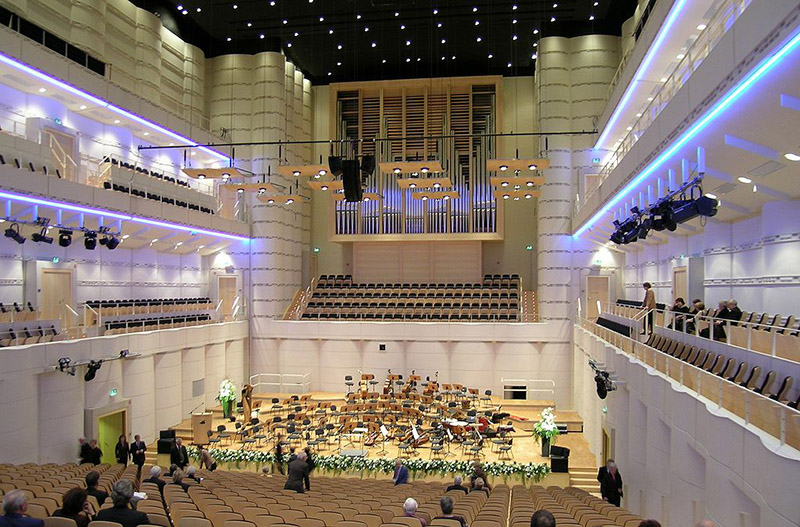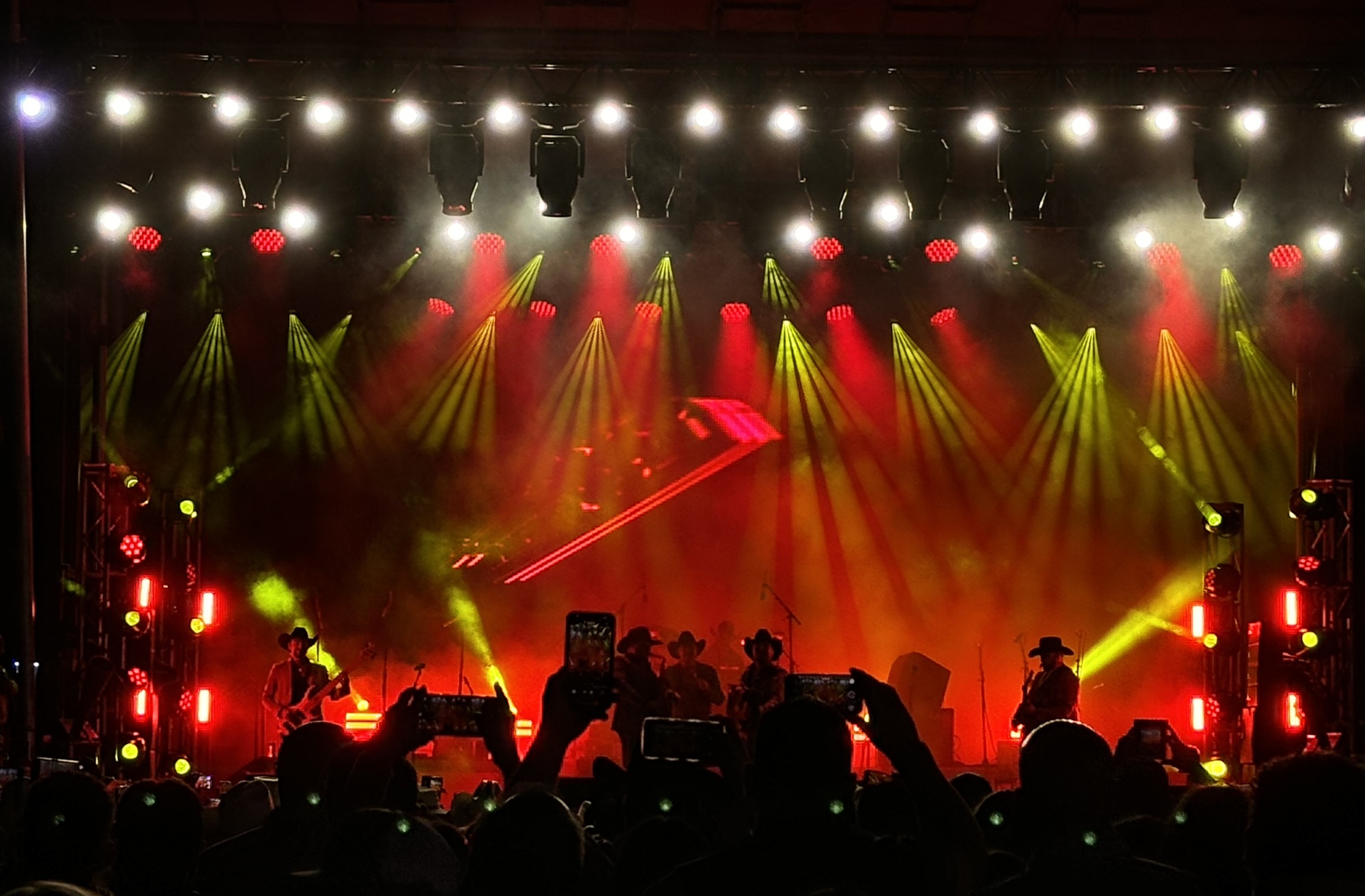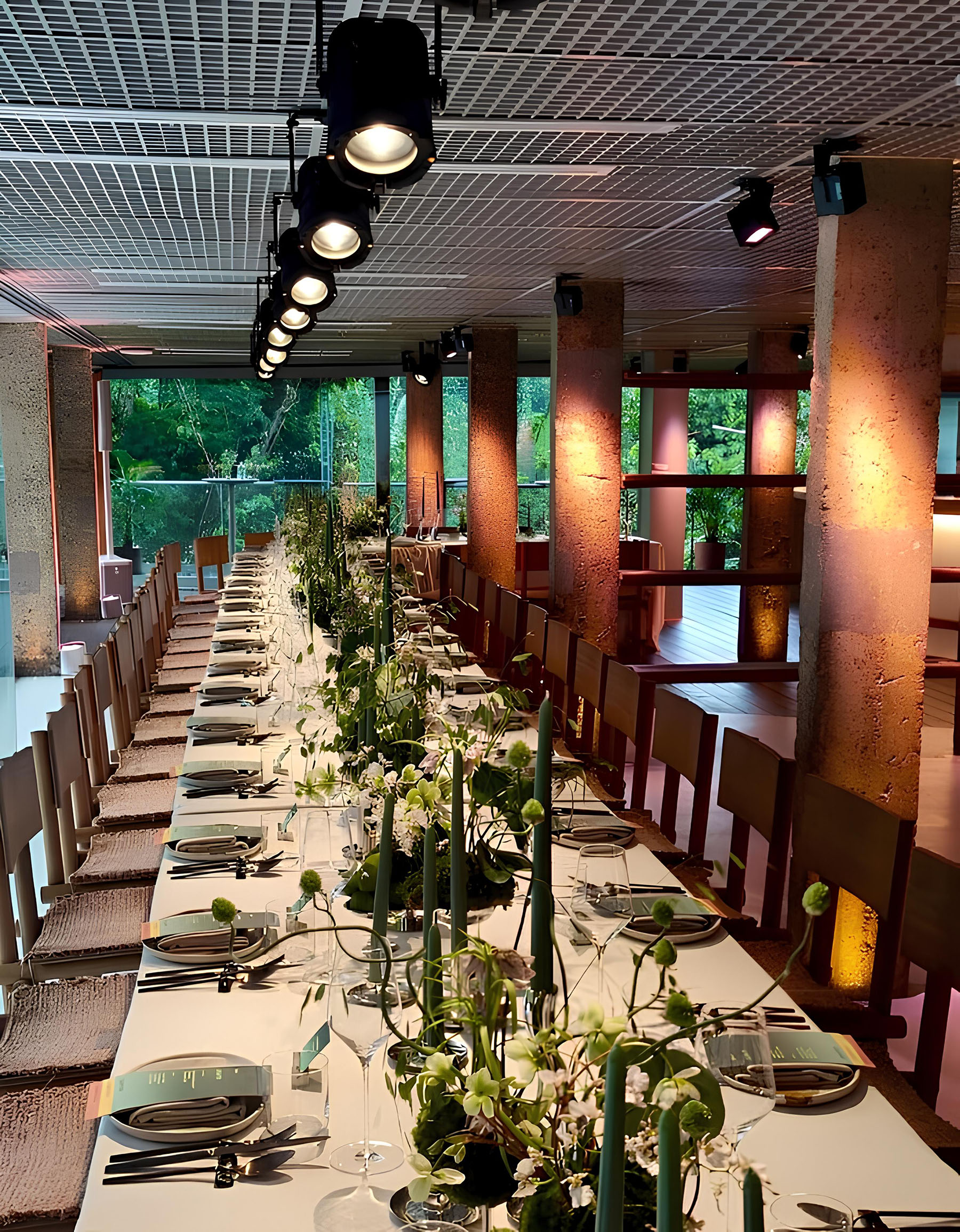
DORTMUND, Germany – Scientists taking aerosol and CO2 measurements at 1,500+ capacity Konzerthaus Dortmund in Germany suggested that, in venues with ample ventilation, masked audiences seated for performances face a relatively low risk for Covid-19 transmission, but the study adds that those risks rise when audience members leave their seats and mingle in foyers and hallways, especially without hygiene precautions such as wearing a mask.
More study highlights by the Fraunhofer Heinrich Hertz Institute (https://www.hhi.fraunhofer.de/en.html):
On behalf of Konzerthaus Dortmund, Fraunhofer Heinrich Institute Goslar and the measurement specialists ParteQ, investigated the spatial dispersion of aerosols and CO2 in the concert hall. The study being conducted in collaboration with the German Environment Agency (Umweltbundesamt) and hygiene experts. It is the first published study to provide experimental data for evaluating the coronavirus infection risk during concert hall visits with extensive measurements being taken in the Konzerthaus Dortmund auditorium and foyers on 2-3 and 20 November 2020. The study shows that the risk of transmission of infectious agents by aerosol transmission can almost be excluded, especially in the auditorium. Utilization of the existing central ventilation system and the wearing of facemasks greatly reduces aerosol and CO2 pollution, to the point that full occupancy of the concert hall would theoretically be conceivable. However, after taking into account access routes and foyers, a checkerboard auditorium layout is recommended, i. e. 50 % of auditorium capacity. In addition to the specific results for a visit to Konzerthaus Dortmund, the study can also be used to make similar statements for other similarly sized concert halls and theatres.
“Concert halls and theatres are not places of infection”, said Dr Raphael von Hoensbroech, artistic director of Konzerthaus Dortmund, previously in September. However, this study does not aim to criticize previous decisions: “The past months have shown that politicians need a scientifically sound basis for decision making. With our study, we want to contribute, to help ensure that concert halls and theatres can again admit sufficient audiences when they reopen”. On the relevance of the study, NRW Minister of Culture and Science, Isabel Pfeiffer- Poensgen states: “The issue of ventilation is a decisive factor for the reopening of cultural institutions. The study of Konzerthaus Dortmund is therefore a valuable building block in the effort to enable performances to continue, even in times of pandemic. At the same time, it shows the great sense of responsibility that cultural institutions have towards their audiences. In view of the great relevance of ventilation, the state government has set up a joint working group with cultural institution representatives who, among others, are currently developing a differentiated opening strategy based on scientific findings. Part of this is a broad-based analysis of the effectiveness of ventilation systems in North Rhine-Westphalian cultural institutions, the implementation of which began at the end of last year”. She goes on to say, “it is painful that the continuing high incidence of infections does not allow for a reopening at the moment. It is all the more important to create perspectives and planning security for the time after lockdown”.
The study provides results that are relevant for a reopening. The existing measures to contain the corona pandemic aim at a general reduction of contacts and therefore also the closure concert halls and theatres to the public. According to the 18 November 2020 resolution of the German Federal Parliament (Bundestag) and German Federal Council (Bundesrat), the Infection Protection Act is to take into account the importance of artistic freedom when restricting the operation of cultural institutions or cultural events. As soon as this is possible in view of the infection situation, cultural institutions should therefore be able to reopen, based on scientific facts and with a differentiated consideration of the respective local and conceptual circumstances.
The following can be summarized for Konzerthaus Dortmund based upon the results of the study:
- With a mask, and with a sufficient supply of fresh air via the existing ventilation and air conditioning system, there was practically no influence of test aerosols on any of the neighboring places from an emitting test person during the tests.
- The large room volume already ensures a strong dilution of contaminated aerosols, and due to the supply and extraction air operation of the ventiltion system without recirculation function, aerosols are effectively removed in all areas and cannot accumulate.
- Without a mask, the seat directly in front should be kept free. With the remaining neighboring seats, infection is very unlikely. A checkerboard seating arrangement of the auditorium is recommended in any case.
- Greater number of people in the auditorium does not disturb the upwards air flow, but rather promotes it through additional thermal effects.
- Wearing masks is always necessary in corridors, in break areas, and in the foyers, as the ventilation system works differently here than in the auditorium (where air escapes through the ceiling) and where close contact cannot be ruled out. During breaks all doors to the auditorium should remain open to allow for additional cross-flow ventilation.
- The concert hall cannot trigger a superspreading event with the existing ventilation in place (with a complete air exchange with fresh, outside air every 20 minutes).
- CO2 measurements during operation can help to better assess the dispersion of air- borne particles in the auditorium.
These results were produced in close coordination with the Federal Environment Agency. “Excellent study with a lot of significance! This is exactly the kind of information we need”, emphasises Dr Heinz-Jörn Moriske, Director and Professor at the Federal Environment Agency (Head of Environmental Hygiene Advisory Office, FB II (BU), Managing Director of the Indoor Air Hygiene Commission), he continues: “I can fully endorse the conclusion. With a checkerboard distribution of guests and 100 % full load of the indoor air system, the risk of infection is very low. Wearing mouth-nose protection in the auditorium is advantageous, although not as important as previously assumed”. Hygiene expert Professor Dr Martin Exner also emphasizes the importance of these results: “The study provides important basics for estimating a transmission risk of SARS-CoV-2 at concerts with an audience”.
In summary, a reopening with at least 50% capacity in a checkerboard arrangement, with one seat free between each seated group, can be recommended on the basis of the study results, especially since the safety distances in the foyer areas and on routes in and out of the auditorium can be ensured. A lower occupancy rate would have no added value for infection control. From a hygiene perspective, once the overall infection figures have returned to a low level, it would be conceivable to have a fully occupied auditorium at a later date, providing masks are worn. This could be backed up, for example, with model-based calculations.
In addition to the specific results for a visit to Konzerthaus Dortmund, the study can also be used to make statements for other concert halls or theatre where the general conditions are comparable in certain respects. Additional studies can be carried out by the Fraunhofer Heinrich Hertz Institute at relatively little expense at venues that do not meet these requirements. The study was led by Professor Dr Wolfgang Schade, Head of Fiber Optical Sensor Systems Department at Fraunhofer Heinrich Hertz Institute.
For the study highlights in English, go to https://newsletter.konzerthaus-dortmund.de/Pressemails/2020-21/Pressemitteilung/2021.01.12_Press-release_results-Aerosol-andCO2-measurements-at-Konzerthaus-Dortmund.pdf
For the full study in German, go to
Photo by Josef Lehmkuhl, Wikipedia



